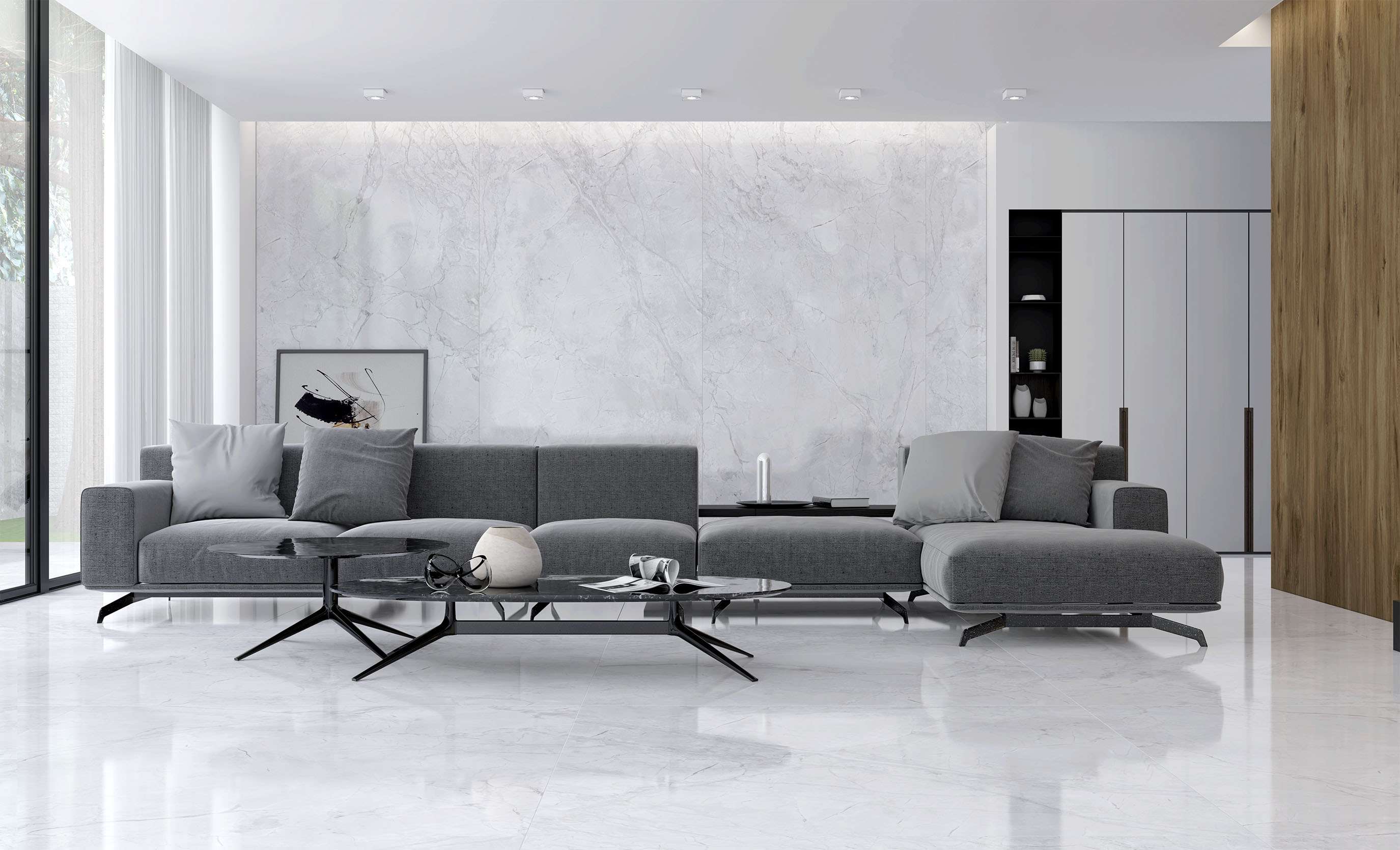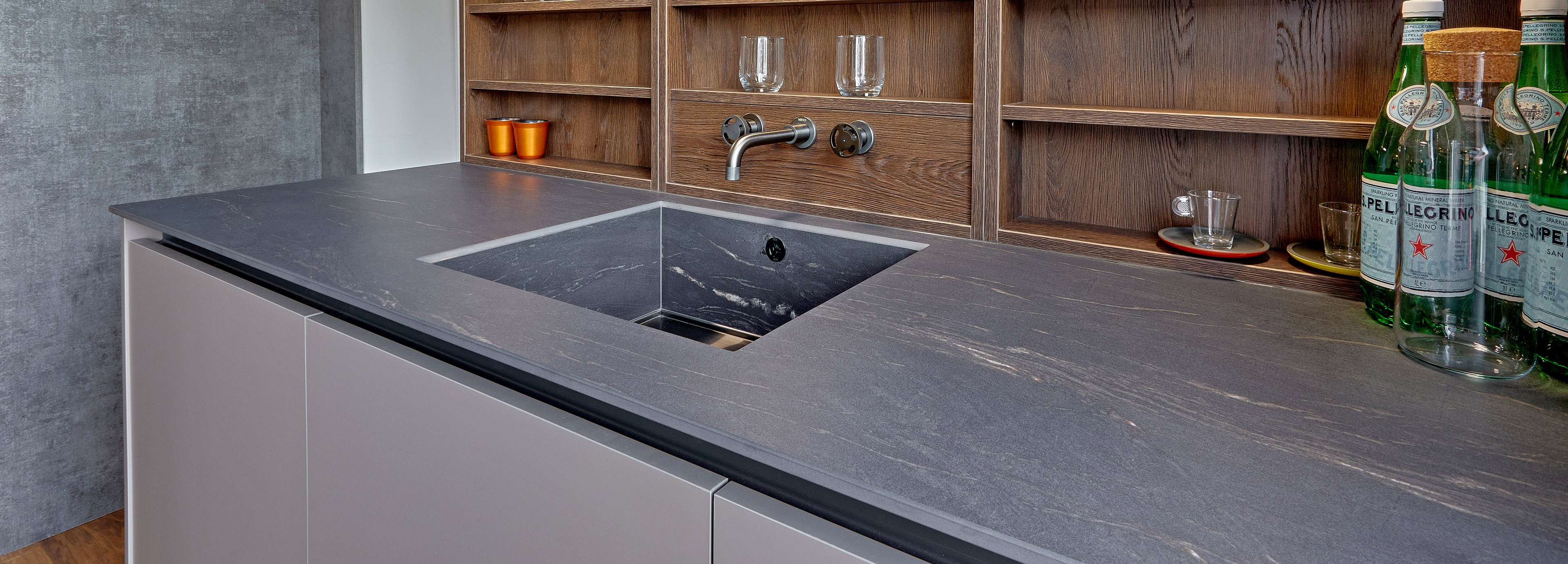Sintered Stone Worktops
for Kitchens and Bathrooms
What is Sintered Stone?
When talking about kitchen worktops, most of us have heard of granite, marble and quartz but now there’s another surface to add to the list. Also referred to as porcelain worktops or ultra compact surfacing, sintered stone is a relatively new product on the market. At its most basic, sintered stone is a surface material that is often made to look like other materials. It is both beautiful and practical – but where does it come from and how is it made?
What is Sintering?
The sintering process itself involves creating an intensely strong product by subjecting carefully selected minerals and stone particles to extreme heat and pressure which bonds the elements together. The result is a product which is non-porous, extremely easy to maintain and highly resistant to stains and chipping. Not only this, but it is also weatherproof and resistant to changes in temperature, making it ideal for use not only inside, but also outside the home.
It can be made to resemble natural stones, tiles, wood, and other smooth or textured surfaces.

What are the benefits of Sintered Stone?
Sintered stone may be produced to be more lightweight that natural stone, but that doesn’t mean it is any less durable – in fact, quite the opposite, as the manufacturing process makes it even more effective.
The non-porous surface guarantees hygiene but sintered stone does not have to be limited to the kitchen. It is also ideal for bathrooms, internal and external wall cladding, and its resistance to heat means it can also be used for fireplaces.
It comes in a wide range of colours and finishes to cover all styles from a modern sophisticated black such as Belvedere Black to the bold, marble effect of Calacatta Extreme. And unlike with granite, the uniformity of the colours and patterns within the slabs will mean surface will have a perfect, consistent finish.
Please take care when using Ceralsio surfaces of different thicknesses as a match in colour tone cannot be guaranteed.
